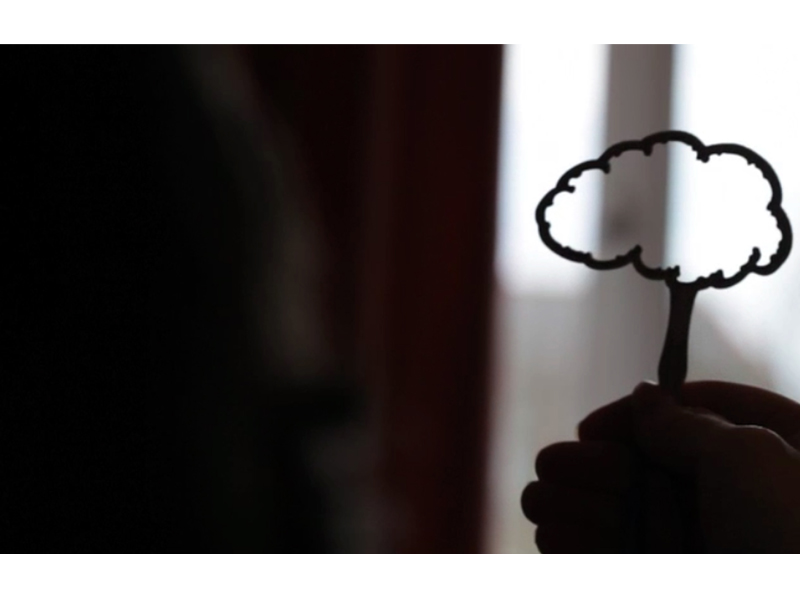
The Journal of Jewellery Research (JJR) is a collaborative online publication recently founded by three jewelers who also juggle the roles of art jewelry historian, critic, postgraduate research lead, and educator. Roberta Bernabei, Jayne Wallace, and Sandra Wilson came together to create JJR because information and academic research about art jewelry are often far flung and difficult to locate. To remedy this problem and to bring credibility to the art jewelry field, the journal was designed to be a peer-reviewed and open-access online publication focused on jewelry studies.
The deadline for submission to the first issue of the Journal of Jewellery Research is June 30, 2017.
Olivia Shih: Could you share your backgrounds with us and talk about how the three of you crossed paths?
Journal for Jewellery Research: We’re all jewelers who use our practices to undertake research as well as teaching, and we are passionate about the potential of jewelry to provide communication, emotional support, and atypical forms of knowledge acquisition within a wide range of cultural, social, and health contexts.
We’ve known each other for a number of years. Sandra Wilson and Jayne Wallace met when they were both PhD students, part of the vanguard of PhDs in jewelry in the UK around 2003—Jayne was studying at Sheffield Hallam University and Sandra at Duncan of Jordanstone College of Art & Design, part of the University of Dundee in Scotland. Roberta Bernabei and Jayne both studied together at Sheffield Hallam, also around this time, and then later taught together on the silversmithing and jewelry BA, run by Roberta, at Loughborough University, School of the Arts, English and Drama, UK.
Roberta is a hybrid art jewelry historian and critic, having studied in three different countries: Italy, Germany, and England. She has had the pleasure of being a pupil of Manfred Bischoff, Bruno Corà, Christoph Zellweger, and Otto Künzli (at The European Ceramic Work Centre, in the Netherlands, for a masterclass). She is also a jewelry maker whose work has been exhibited at various national and international venues, including Birmingham Museum and Art Gallery; Victoria & Albert Museum; National Museum of Modern Art, Tokyo, and the Museums of Decorative Arts in Berlin and Turin. Since 2004 she has been a researcher lecturing predominantly in postgraduate studies at Loughborough University, where she was the director of postgraduate studies in the arts until 2014. Her theoretical contribution to the field of art jewelry and the pedagogy of teaching jewelry at HE ranges from a monographic book,[1] a book chapter in Exhibiting Craft and Design: Transgressing the White Cube Paradigm, 1930–Present, and to her latest paper for a special edition of the Journal of Design—both outcomes will be published by Routledge in May (Taylor & Francis Group).
Jayne is postgraduate research lead for the School of Design at Northumbria University and loves working with design PhD researchers to further the ways in which design and craft can contribute positively to society as well as to developing new knowledge. Jayne’s own research investigates the ways in which jewelry can be used both within co-creative participatory methods with people and as final outcomes to support people’s sense of self, particularly in dementia, approaching end of life, and in bereavement. Her PhD was an exploration into poetic forms of digital jewelry, and she has worked within multidisciplinary teams of digital technologists (including at Microsoft Research and Mozilla Foundation) to develop forms of jewelry that harness digital technologies in poetic, atypical ways. She presents her work internationally, primarily through research publications, and makes pieces for people through her research that live with them either as individuals or in some cases as objects used in dementia care units within hospitals. The UK Crafts Council created its first research solo touring exhibition around her work in 2010 (CraftCube:Research), and she is co-founder of the international conference Research Through Design (with Joyce Yee). She is currently leading a three-year research project (Enabling Ongoingness) into how design and the digital can support ongoing relationships beyond death, working with people who have dementia, people with terminal illness, and bereaved people.
Sandra’s jewelry practice explores the interface between art and science and has won awards from the European Designers Group and the Scottish Arts Council. Her work has toured internationally, including at Schmuck, Inhorgenta, and the Nobel Museum in Stockholm. She was course director of the jewelry and metal design program at Duncan of Jordanstone College of Art & Design in Dundee. Her funded research investigates our relationship with the digital, for example Evoke: Out of the Showcase—The Meaning of Jewellery in the Digital Age, funded by the Arts & Humanities Research Council, which explored how the meaning of jewelry is mediated by the digital means of communication. More recently, she was a partner in a major research project, supported by the Engineering & Physical Sciences Council, on identity management and the use of wearable technologies. (Identity management is the process of enabling people to prove that they are who they say they are, whether when traveling through airports or online, etc.) This research project, IMprints, explored the public’s response to these new services and technologies.
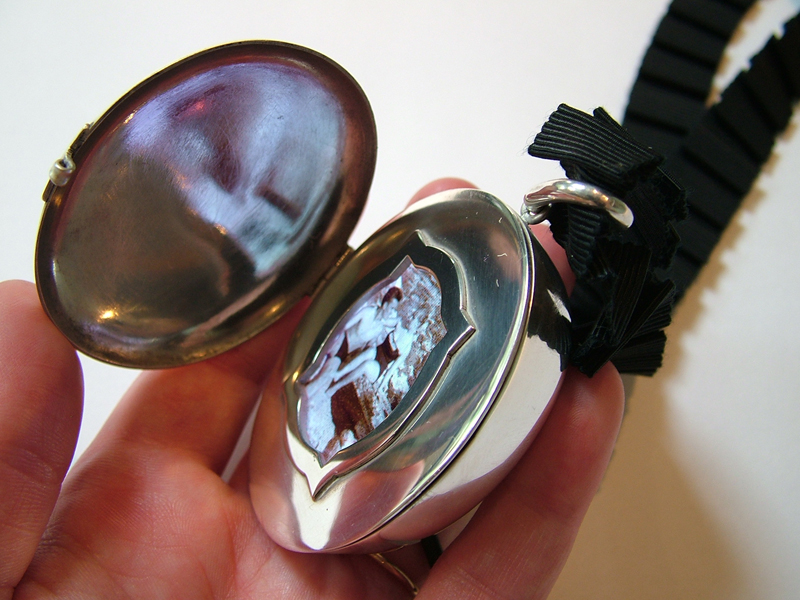
What spurred the creation of the Journal of Jewellery Research?
Journal for Jewellery Research: There are several reasons for the JJR to shift from aspiration to reality. Despite there now being a greater number of jewelry PhDs being undertaken, and more jewelers using their work within research contexts, information on research remains quite disparate and spread across a variety of different journals and publications. This is perhaps especially the case as many of the new jewelers are working with colleagues from different disciplines, such as health, life sciences, or human-computer interaction. The wider implications are that it is increasingly difficult to see an overview of the many wonderful ways in which jewelry research is being conducted, or to have a place where jewelry is championed as the focus of a journal, rather than being a minor thematic inclusion. The absence of a specialized academic journal for jewelry has been evident for many years, and is something that we wanted to help change. Our hope is that JJR, instigated by Roberta and hosted by Loughborough University, can establish one of the pillars necessary to further build the academic reputation of jewelry studies, and that we can offer the creative scope to represent jewelry research in the creative format that it deserves and that echoes the kind of work being carried out.

As a peer-reviewed online and open-access publication that focuses on the design, theory, and praxis of jewelry studies, the journal places emphasis on well-researched academic papers. In which ways do you think a dedicated journal will benefit the jewelry field?
Journal for Jewellery Research: We want the journal to be an exciting publication for anyone within the jewelry field—whilst we hope it raises the awareness of the growth of research being conducted by jewelers and gives this work a new creative context for dissemination, we also hope that it will be of value to students and makers more widely. We envisage the journal, as it establishes itself, bringing greater credibility to the jewelry field within wider research communities and disciplines, which can only echo back to the jewelry field in positive ways. We, along with our advisory board,[2] are true advocates for the value of how jewelers think, of how they work with people in participatory design engagements, and how they approach making and research in complex contexts using their jeweler skills and sensibilities—and we hope that JJR can reveal some of these qualities to a much wider audience.
We believe that we need to start to have more conversations, too, as a field about research-led teaching and what this could mean in practice. The journal could be a useful tool within teaching teams to discuss how this could grow, and to disseminate examples of how this is currently happening. For example, in Dundee, Sandra has been involved in research on jewelry, superstition, and well-being and the role of contemporary jewelry to act as a placebo—so her undergraduate students are working on projects to design a contemporary amulet.
The UK has a good research culture, with some funding available from the UK research councils, but it can be difficult for jewelry researchers to evidence the credibility of their field in research terms to research councils without the existence of jewelry-focused academic journals and rigorous forms of peer review for jewelry conferences. We know from international colleagues that the story is similar in other countries, too. We hope that the journal can be a catalyst for more international collaboration and funding streams.
We have 11 themes that are meant as stimuli for submissions of papers, and they (collectively) elaborate on the ethos of the journal. They detail areas of jewelry practice and context that we wish to support a discourse around. Papers can be related to one or more themes.
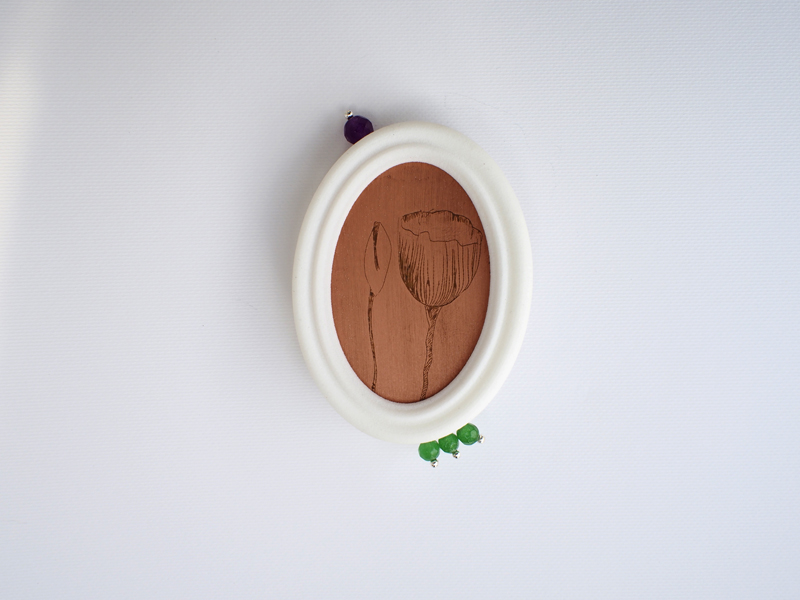
You will be publishing research papers in two categories: conventional papers and visual/textual papers. How does a visual/textual paper differ from a conventional one?
Journal for Jewellery Research: Our conventional papers echo a traditional journal paper format (i.e., they are composed predominantly from text, with images interspersed in the writing to supplement the points being made). Visual/textual papers, in contrast, have a more open paper format where imagery is used purposefully to communicate qualities of the research accompanied by text. Here the visual (e.g., sketches, collages of making processes, illustrations, annotated photographs, storyboards of jewelry in dynamic contexts, stills from films) is given equal importance to the text and should be thought of as a communicative tool rather than supplementary to the written components.
We’ve introduced visual/textual papers because we wanted to make space for papers that felt more analogous to the creative ways that many jewelers create and present their work. We know from our own experience of writing for conventional journal or conference formats, which prioritize a traditional scientific format, that it can feel too flat or constrictive and doesn’t support the visual ways in which designers and jewelers often think, or the visual material that constitutes the work of a jeweler. We also very much wanted to open up a space for jewelers to communicate elements of their research that can be difficult to communicate through words, such as nuances of the making process, inspiration for ideas, or narratives of the piece.

Why is it important to publish papers where the visual and textual material are equally weighted?
Journal for Jewellery Research: We wanted to be explicit rather than implicit about this point and hoped that in doing so we would be emphasizing the value of different forms of intelligent making and enquiry. We are keen to offer ways to represent practice-based projects and give due attention to the visually rich creative practices and the thinking and making within them. By saying that the visual and textual material are equally weighted in one of our paper formats, we hoped to give an opportunity for, and credibility to, the visual aspects of any research, and perhaps shift the balance from research that prioritizes certain kinds of dissemination to something more in tune with how jewelers think and work. We also wanted to create a journal that had relevance not only to researchers but to students and jewelry practitioners more broadly, and that would be enjoyed by these communities as existing formats in the way that AJF, Klimt02, and Current Obsession are.
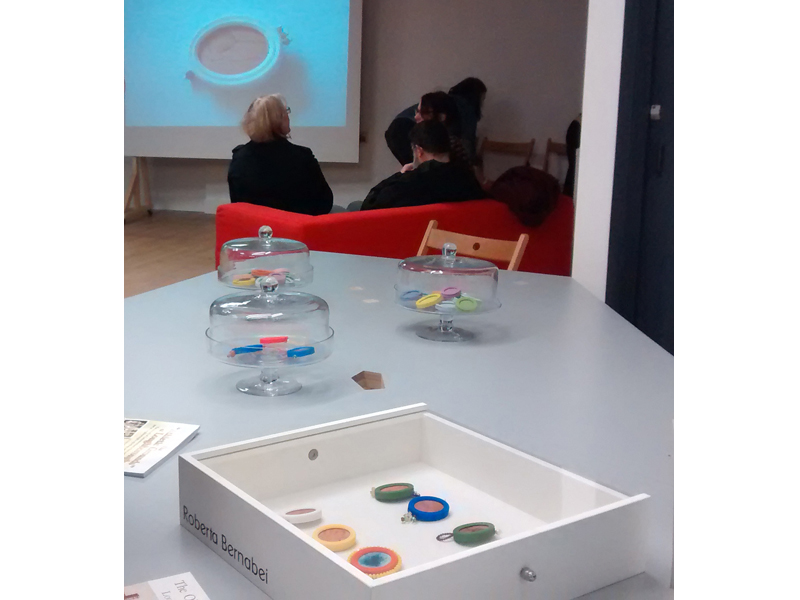
What will you be looking for in paper submissions? How will you determine which to publish?
Journal for Jewellery Research: We are looking for research that excites and informs—that is thought-provoking and challenging. But decisions will also be made on putting together issues that have some coherence. At some stage we also hope to have special issues on particular themes and topics that can advance our thinking in particular areas, for example jewelry and ritual, etc.
Beyond a good writing style and presentation, our criteria when looking at content will be, “Overall is this an interesting and original contribution to the field or topic?” We have a great review process in place, though, which means that the inclusion of papers will be down to a number of reviewers’ independently reviewing a paper.[3]
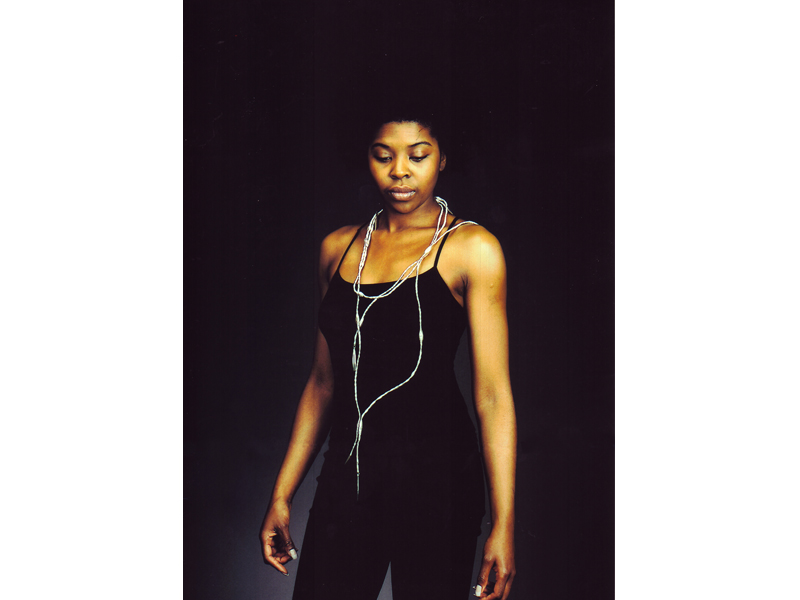
The contemporary jewelry field is constantly evolving and burgeoning with fresh ideas. Are there any changes or new directions that excite you?
Journal for Jewellery Research: It’s good to see a lot more jewelry that is critical by nature, that stimulates thought and discussion about the kind of jewelry we might see in the future. For example, Olga Noronha has just completed a PhD at Goldsmiths; her work explores jewelry for medical repair. One of Sandra’s PhD students, Maria MacLennan, develops forensic jewelry for identifying people in major disaster incidents. Nantia Koulidou, who is studying with Jayne, explores how digital jewelry can support self within micro-transitions of identity.
New developments in wearable technologies are also forcing industry, the wider public, and academia to recognize that jewelry is more than just something worn on the body, but has a much deeper meaning and connection to the wearer. A lot of wearable technology is concerned with surveillance rather than empowering the wearer—the best wearable technologies embody an emotional and expressive dimension and give the wearer control over their data and information and how it is accessed and used, and that is important.
It is also exciting to understand that the contemporary jewelry field is evolving and developing in a lot of countries, including China, for example. A recent research project took Roberta to China, where she had a chance to meet key pioneers such as Professor Teng Fei and Associate Professor Shannon Guo. Furthermore, it is a fascinating evolution to analyze how European and American education has influenced Chinese students when they return with their newly acquired skills to China. It is interesting to see how they will treasure their heritage and merge it with new influences from the Western educational system and culture.
Also, it is a good sign to acknowledge that there is a growing desire from those who are interested in art and design to acquire knowledge and expand it in relation to contemporary jewelry. This is testified to by the increase in academic publications and critical interviews or reviews on online platforms. Accordingly, Roberta is running a new pilot educational project at Loughborough University where she uses jewelry research and practice to teach BA students who are unfamiliar with jewelry disciplines. The intention is to employ a cross-disciplinary approach to textiles, graphic communication, and fine art students so they may enhance their critical thinking in art and design.
Finally, we are particularly interested in jewelry that can act as aids for health and well-being, but also that confers a strong personal language that explores philosophical and universal issues.

What books or articles would you suggest for our readers who are interested in contemporary jewelry research?
Journal for Jewellery Research: For historical jewelry research, the journal Jewellery Studies is good, as is Silver Studies the Journal of the Silver Society. The library at Goldsmiths Hall in London is also a treasure trove of material, and the librarians are so helpful. Conferences such as ACM CHI SIGCHI Conference on Human Factors in Computing Systems are starting to produce more papers related to wearable technologies. You can also find some papers at academia.edu, a UK research online resource. Also for general literature review purposes, these authors/texts can be considered key in relation to art jewelry: Liesbeth den Besten, Kevin Murray, and Jewels of Mind and Mentality: Dutch Jewellery Design 1950–2000. Please see the reading list at the end of the interview for more.
There have been some good events and conferences recently, such as the UK Craft Council’s Make: Shift, which is becoming an annual event that includes work by a number of jeweler/researchers. All Makers Now was a two-day conference in Cornwall in 2016 which explored the relationships between the physical and digital worlds.
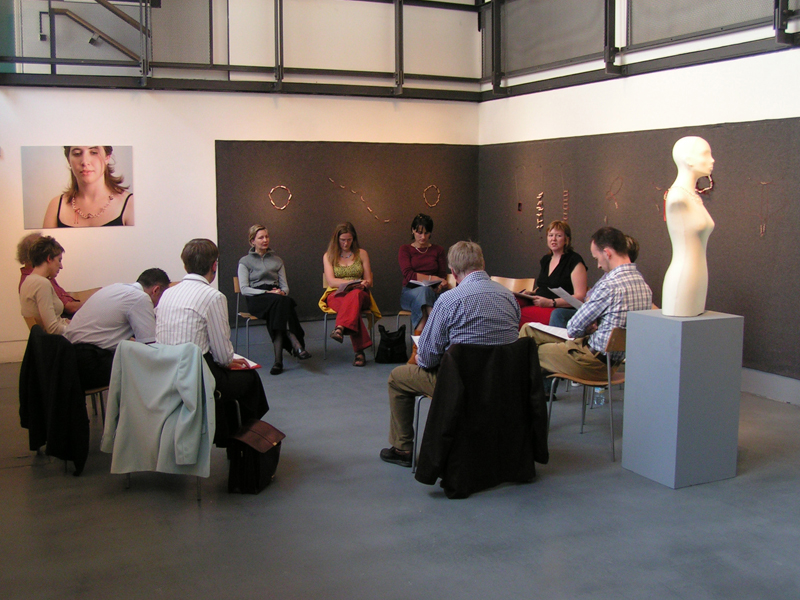
Have you recently seen or read anything stimulating? Could you share your findings with us?
Journal for Jewellery Research: Kathy Vones’s recent PhD submission. Kathy was shortlisted for the Arts Foundation Award for Jewellery in 2016, and her PhD explored stimulus-responsive jewelry that takes us into the uncanny valley of jewelry organisms on the body that respond to stimuli in the environment. She uses smart materials and 3D printing to create interactive wearables. You can read about them on her blog, Smart Jewellery: Towards Future Interactive Craft. Her PhD also advocates for an interactive craft manifesto that would help move contemporary jewelry forward as a discipline.
The Chinese Imperial Palace in Beijing is an absolutely astonishing place. It also offers the opportunity to see the permanent collection of Chinese jewelry and ornaments and a temporary exhibition on the treasures from the National Museum of Kabul, Afghanistan (in the galleries of the Palace Museum). Also in Beijing, there is an interesting art jewelry exhibition by Teng Fei, Plumtree Scent: Contemporary Jewelry.
On a different note, there is a wonderful Japanese film called Sweet Bean, directed by Naomi Kawase. It was selected to open the Un Certain Regard section at the 2015 Cannes Film Festival and to be screened in the Contemporary World Cinema section of the Toronto International Film 2015. The movie is a beautiful inspirational story that gives us a sense of hope by confronting real heartbreak head-on with compassion. It also questions universal beauty and concerns on the relationship between human beings and nature.
Thank you.

The deadline for submission to the first issue of the Journal of Jewellery Research is June 30, 2017
Journal of Jewellery Research Recommended Reading List
Glenn Adamson, Thinking Through Craft (New York: Berg, 2007).
Roberta Bernabei, Contemporary Jewellers: Interviews with European Artists (Oxford: Berg, 2011).
Susan Cohn, Unexpected Pleasures: The Art and Design of Contemporary Jewelry (New York: Rizzoli, 2012).
J. Cunningham, Maker, Wearer, Viewer: Contemporary Narrative European Jewellery (Glasgow: The Glasgow School of Art, 2005).
Liesbeth den Besten, On Jewellery: A Compendium of International Contemporary Art Jewellery (Stuttgart: Arnoldsche, 2011).
Peter Dormer and Ralph Turner, The New Jewelry: Trends and Traditions, 2nd ed. (London: Thames and Hudson, 1994).
Susanna Heron, The Jewellery Project: New Departures in British and European Work 1980-83: A Collection Made on Behalf of Malcolm, Sue and Abigale Knapp, New York by Susanna Heron and David Ward, London, Crafts Council Gallery, 20 April–26 June 1983 (London: Crafts Council Gallery, 1983).
Florian Hufnagl, Maribel Königer, Otto Künzli, and Ellen Maurer Zilioli, The Fat Booty of Madness (Stuttgart, Munich: Arnoldsche, States Museum für Angewandte Kunst, 2008).
Damian Skinner, Contemporary Jewelry in Perspective (New York: Lark Jewelry and Beading, 2013).
C. Weber and R. Moller, Mode und Modeschmuck 1920–1970 in Deutschland (Stuttgart: Arnoldsche, 1999).
J. West, Made to Wear: Creativity in Contemporary Jewellery (London: Lund Humphries in association with the Lethaby Press, Central Saint Martins College of Art and Design, 1998).
André Gali, Crafting Exhibitions (Stuttgart: Arnoldsche, 2015).
Jorunn Veiteberg, “Touching Stories,” in Benjamin Lignel, Shows and Tales: On Jewelry Exhibition-Making (Mill Valley: Art Jewelry Forum, 2015), 127–133.
Mònica Gaspar, “Craft in Its Gaseous State: Wouldn’t It Be Nice … Wishful Thinking in Art and Design.” The Journal of Modern Craft, 2 (3, November, 2009), 355–358.
J. Geigel Mikulay, “The Tool at Hand.” The Journal of Modern Craft, 5 (3, November 2012), 351–354.
Yvonne Joris, Jewels of Mind and Mentality: Dutch Jewelry Design 1950–2000 (Rotterdam: Museum Het Kruithuis, 2000), 010.
R. Ross Russell, Gender and Jewelry: A Feminist Analysis (New York: NA, 2010).
[1] Roberta Bernabei, Contemporary Jewellers: Interviews with European Artists (Oxford: Bloomsbury [formerly Berg], 2011).
[2] Liesbeth den Besten, Stephen Bottomley, Mònica Gaspar, Sian Hindle, Jenny Hutton, Benjamin Lignel, Lin Cheung, Kevin Murray, Laura Potter, Josephine Winther, André Gali, and Ellen Maurer Zilioli.
[3] The initial stage of the JJR’s peer review procedure starts with the editor’s screening to assess the validity and coherence with one of more of the themes, then the paper is anonymized and assessed independently by two expert reviewers accordingly with criteria established and published on the review form.




